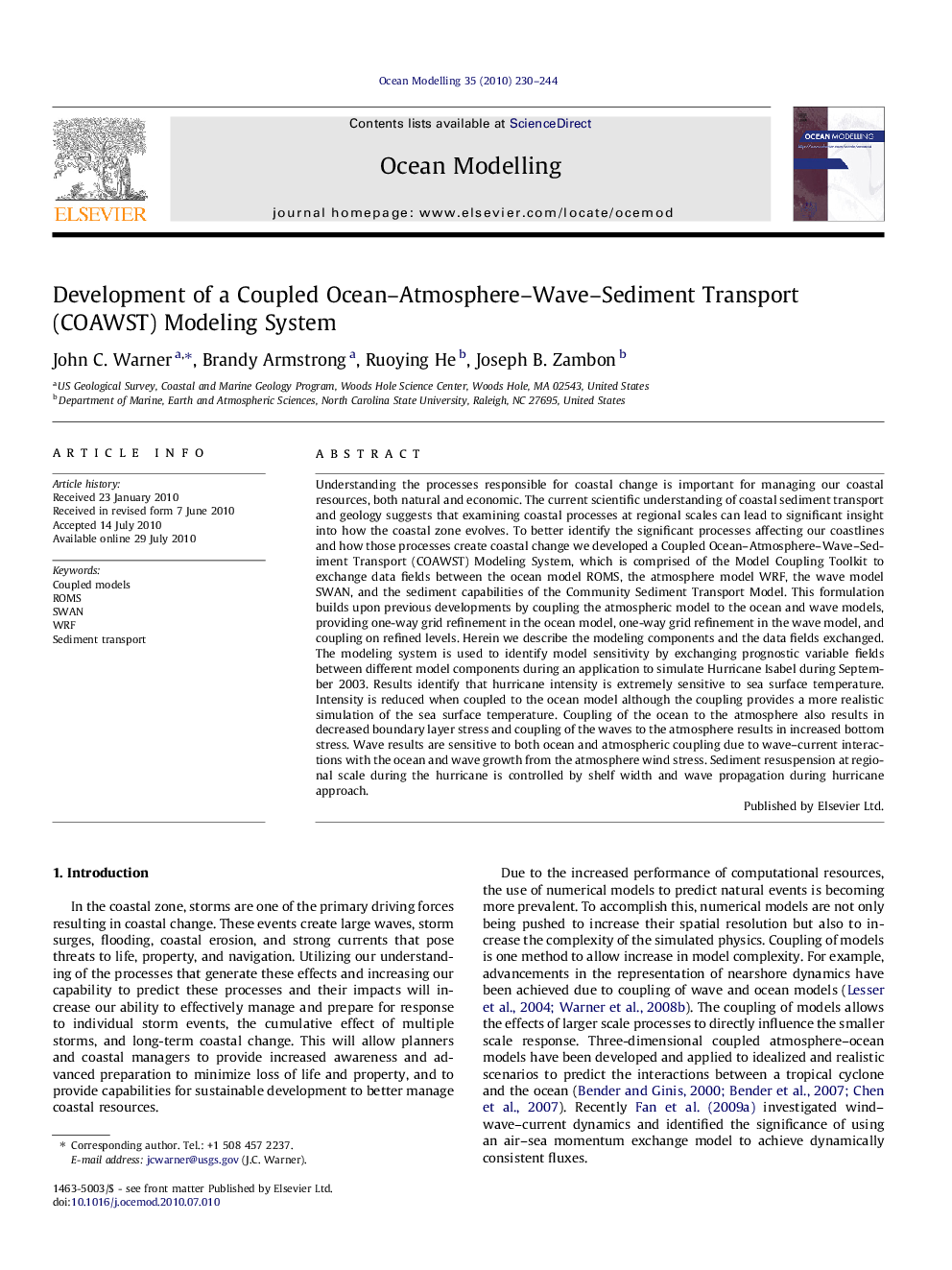| Article ID | Journal | Published Year | Pages | File Type |
|---|---|---|---|---|
| 4552367 | Ocean Modelling | 2010 | 15 Pages |
Understanding the processes responsible for coastal change is important for managing our coastal resources, both natural and economic. The current scientific understanding of coastal sediment transport and geology suggests that examining coastal processes at regional scales can lead to significant insight into how the coastal zone evolves. To better identify the significant processes affecting our coastlines and how those processes create coastal change we developed a Coupled Ocean–Atmosphere–Wave–Sediment Transport (COAWST) Modeling System, which is comprised of the Model Coupling Toolkit to exchange data fields between the ocean model ROMS, the atmosphere model WRF, the wave model SWAN, and the sediment capabilities of the Community Sediment Transport Model. This formulation builds upon previous developments by coupling the atmospheric model to the ocean and wave models, providing one-way grid refinement in the ocean model, one-way grid refinement in the wave model, and coupling on refined levels. Herein we describe the modeling components and the data fields exchanged. The modeling system is used to identify model sensitivity by exchanging prognostic variable fields between different model components during an application to simulate Hurricane Isabel during September 2003. Results identify that hurricane intensity is extremely sensitive to sea surface temperature. Intensity is reduced when coupled to the ocean model although the coupling provides a more realistic simulation of the sea surface temperature. Coupling of the ocean to the atmosphere also results in decreased boundary layer stress and coupling of the waves to the atmosphere results in increased bottom stress. Wave results are sensitive to both ocean and atmospheric coupling due to wave–current interactions with the ocean and wave growth from the atmosphere wind stress. Sediment resuspension at regional scale during the hurricane is controlled by shelf width and wave propagation during hurricane approach.
